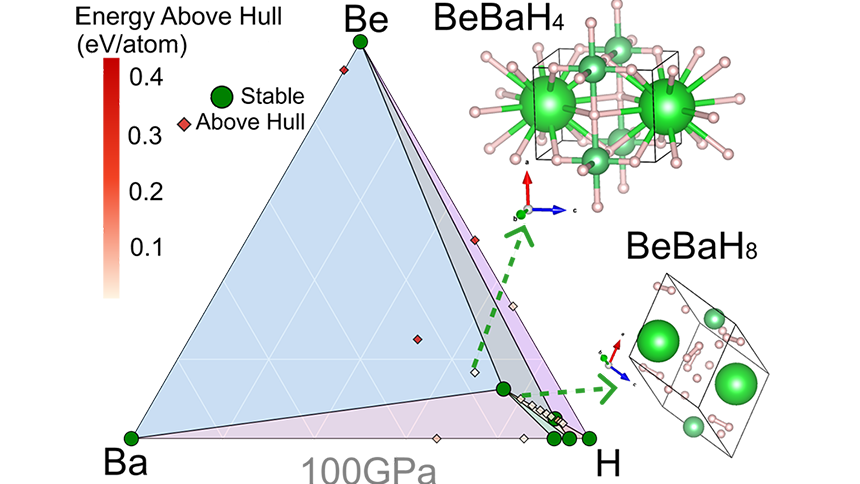Enhanced superconductivity in barium hydrides via light element incorporation
Barium hydrides are of interest for their potential in both ionic conductivity and superconductivity. Recently, a superconducting hydride BaH12 containing H2 and H3−1 molecular units was experimentally reported with a critical temperature Tc of 20 K at 140 GPa. Herein, we combine ab initio methods with a rapid calculator of Tc based on the networking value model to predict that the introduction of light elements, such as Be, can effectively expand the structure diversity and structure space of barium hydrides. Although molecular hydrogen units are still widely present in thermodynamically stable and metastable crystal structures, we find that a metastable phase of BeBaH8 shows a higher Tc of 49 K than BaH12 at a reduced pressure of 100 GPa. This BeBaH8 remains dynamically stable at 15 GPa. Furthermore, our study shows that increasing pressure can further elevate Tc beyond 100 K by enhancing the electron-phonon coupling constant. Our study proposes a feasible method for broadening the structural landscape in the exploration of superconducting phases of barium hydrides.
Read the whole article by Fang and Errea in Physical Review B.
